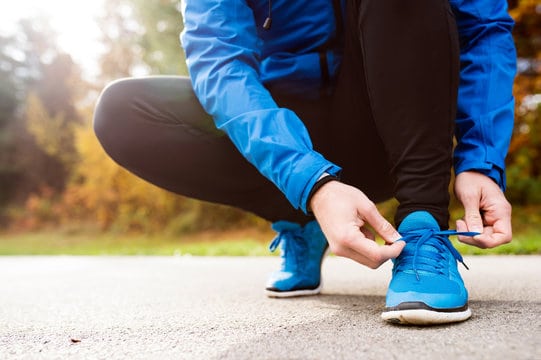Embarking on the road to recovery after a hip replacement is a transformative journey—one that raises questions about the return to daily activities, including the seemingly simple act of tying one’s shoes. This article delves into the commonality of hip replacements in the United States, the nuances of recovery, and presents an innovative alternative—stem cell therapy.
The Ubiquity of Hip Replacements
With the prevalence of hip pain affecting countless individuals, hip replacements have become a widespread solution to restore mobility and alleviate discomfort. The procedure involves replacing a damaged hip joint with an artificial one, offering a new lease on life for those hindered by persistent pain. However, this procedure is not for everyone – as it can be very physically taxing and risky for seniors. Read on to learn more about the risks, and a viable alternative to hip replacements.
Post-Operative Expectations
Understanding what to expect after a hip replacement is vital for individuals on the path to recovery. Physical therapy plays a pivotal role in rebuilding strength and flexibility, yet questions often arise about the resumption of daily activities, such as the seemingly simple task of tying one’s shoes.
How Long After Hip Replacement Can I Tie My Shoes?
Recovery from a hip replacement is a complex process influenced by various factors, and the ability to tie one’s own shoes is often a milestone that reflects the progress. Here are some issues that can impact the recovery timeline and the patient’s ability to perform daily activities, including tying their shoes:
1. Surgical Complications
The occurrence of complications during or after surgery, such as infection or blood clots, can significantly impede the recovery process. These complications may require additional medical attention and could delay the rehabilitation timeline.
2. Overall Health and Fitness
The patient's pre-existing health and fitness level play a crucial role in recovery. Individuals who are generally healthier and more physically active before the surgery tend to have a smoother rehabilitation process. Poor overall health may result in a more extended recovery period.
3. Age of the Patient
Age is a factor that can affect the recovery process. Older individuals may experience a slower recovery compared to younger patients. The body's natural healing processes can take longer, and rehabilitation efforts may need to be adjusted accordingly.
4. Bone Density and Quality
The quality of the patient's bones can influence the success of the hip replacement and subsequent recovery. Poor bone density may necessitate additional precautions and modifications to the rehabilitation plan to avoid complications.
5. Physical Therapy Adherence
The commitment to and consistency in following the prescribed physical therapy regimen are critical to a successful recovery. Patients who actively participate in physical therapy sessions and diligently perform exercises at home often experience a more rapid return to normal activities.
6. Psychological Factors
Mental well-being and a positive mindset can contribute to a smoother recovery. Anxiety, depression, or fear can hinder progress, affecting the patient's motivation to engage in rehabilitation exercises and slowing down the overall recovery timeline.
7. Preoperative Hip Function
The state of the hip joint before surgery can impact the recovery process. Individuals with severely restricted hip function prior to the replacement may take longer to regain full range of motion and strength.
8. Postoperative Pain Management
Effective pain management is crucial for successful rehabilitation. Inadequate pain control may lead to reluctance in performing exercises, potentially slowing down the recovery process.
9. Preexisting Conditions
Other preexisting health conditions, such as diabetes or cardiovascular issues, can complicate the recovery process. These conditions may require additional attention and can contribute to an extended rehabilitation period.
Understanding and addressing these factors are essential for healthcare professionals when developing a personalized recovery plan for hip replacement patients. By considering these variables, medical teams can optimize rehabilitation strategies, leading to a more efficient recovery and a quicker return to daily activities, including the ability to tie one’s own shoes.
The timeline for resuming activities post-hip replacement, including shoe tying, is a topic of interest for many patients. While the answer varies, it’s generally a matter of weeks to months. Adhering to the guidance of orthopedic professionals and gradually reintroducing these movements is key to a successful recovery.

Navigating Risks and Challenges Pertaining to Hip Replacements
While hip replacements have proven effective for numerous individuals, it’s crucial to acknowledge the inherent risks and challenges associated with the procedure. The recovery process can be demanding, and complications may arise, prompting a consideration of less invasive alternatives.
Stem Cell Therapy: A Paradigm Shift in Hip Pain Management
Enter stem cell therapy—a revolutionary alternative to traditional hip replacements. GIOSTAR Chicago is at the forefront of this innovative approach, leveraging the body’s natural regenerative capabilities to promote tissue repair. Unlike conventional surgery, stem cell therapy offers a minimally invasive option that may result in a swifter recovery with fewer complications.
Choosing GIOSTAR Chicago for Stem Cell Therapy:
GIOSTAR Chicago distinguishes itself as a leader in the field of stem cell therapy. With over 20 years of research and hundreds of clinical trials in the field of regenerative medicine, our team of seasoned professionals is committed to delivering personalized care, ensuring each patient receives individualized attention. Our team at GIOSTAR Chicago provides access to the latest advancements in regenerative medicine – with a focus on putting the patient first.
Furthermore, all of our client’s must undergo a medical history. If we esteem that a patient isn’t a good candidate for stem cells – we’ll be very frank with you. We care more about advancing our patient’s condition and promoting health above all.
If you’re contemplating an alternative to hip replacement or seeking more information about stem cell therapy, GIOSTAR Chicago welcomes you to start a conversation. Our experts are ready to discuss your unique circumstances, providing insights and guidance on the potential benefits of stem cell therapy in your quest for a pain-free, active lifestyle. Fill out the contact form or simply tap here to call us and enjoy your free consultation.
About GIOSTAR Chicago:
GIOSTAR Chicago is dedicated to developing the most advanced stem cell-based technologies and providing the best regenerative medicine for people who want to enjoy a healthy and active lifestyle.


